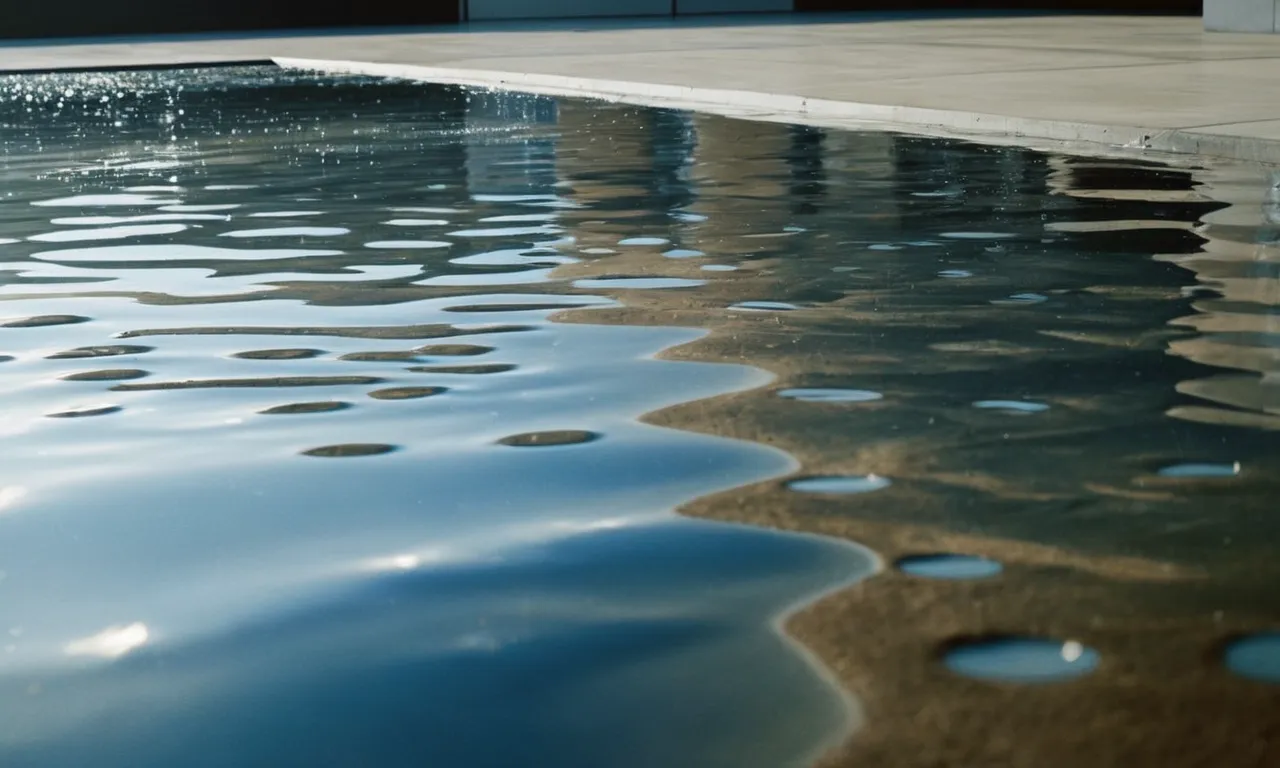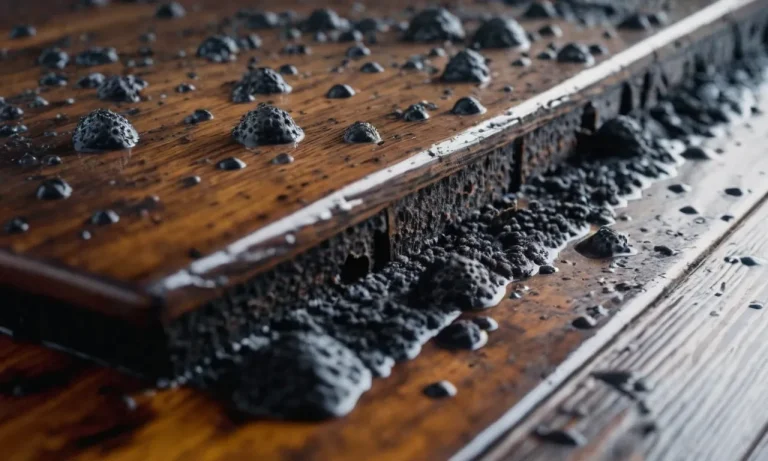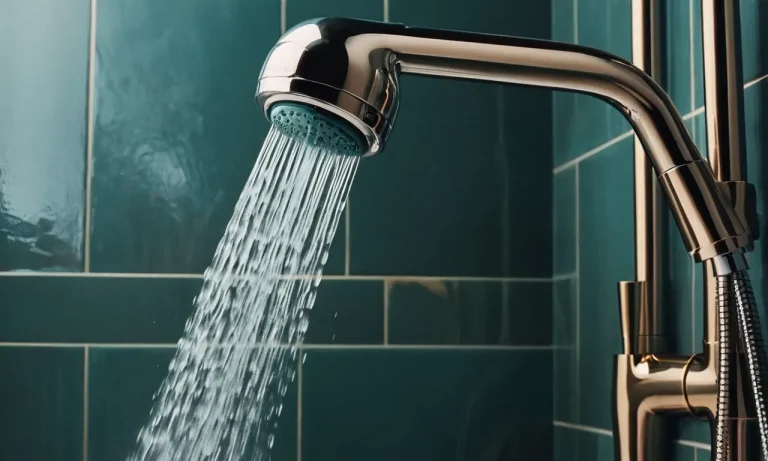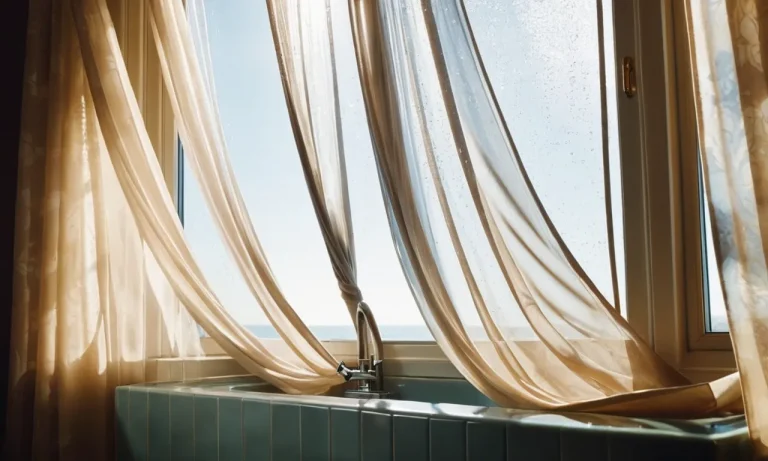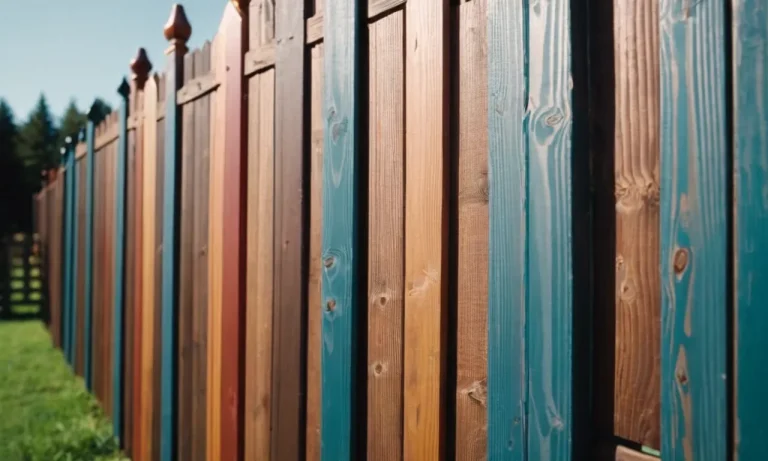What Causes Water To Come Up Through Concrete Flooring And How To Fix It
If you’ve noticed water seeping up through cracks or pores in your concrete floor, you’re likely wondering where it’s coming from and how to stop it. This frustrating issue can damage flooring materials, enable mold growth, and lead to unsafe conditions if left unchecked.
If you’re short on time, here’s a quick answer to your question: Water coming up through concrete floors is usually caused by hydrostatic pressure from underground water pushing moisture upwards. Fixing it involves sealing cracks and pores, improving drainage, and installing systems to relieve pressure like a sump pump.
In this comprehensive guide, we’ll explore all the common causes of water coming up through concrete floors, signs to look for, prevention tips, and how to fix it through various methods like sealing, new drainage, and pressure relief systems.
What Causes Water to Come Up Through Concrete Floors?
Water seeping through concrete floors can be a frustrating and damaging issue for homeowners. Understanding the causes of this problem is vital in order to effectively address and prevent it. Here are some common factors that can lead to water coming up through concrete flooring:
Hydrostatic Pressure
One of the main culprits behind water seepage through concrete floors is hydrostatic pressure. This occurs when groundwater builds up around the foundation of a building and exerts pressure on the concrete.
Over time, this pressure can cause water to seep through cracks, joints, or porous areas in the concrete, leading to water intrusion in the interior spaces.
Cracks and Pores in Concrete
Concrete is known for its durability, but it is not completely impervious to moisture. Over time, cracks can develop in concrete due to various factors such as settlement, freeze-thaw cycles, or structural stress. Additionally, concrete can have inherent pores that allow water to pass through.
When there are cracks or pores in the concrete flooring, water can easily find its way up from the ground and into the building.
High Water Table
A high water table can also contribute to water coming up through concrete floors. The water table refers to the level of groundwater beneath the surface of the ground. If the water table is close to or above the level of the concrete floor, the pressure from the water can force it to seep through any openings or weaknesses in the concrete, leading to moisture issues indoors.
Poor Drainage
Inadequate drainage around the building’s foundation can exacerbate the problem of water coming up through concrete floors. When rainwater or surface runoff is not properly directed away from the foundation, it can accumulate and create hydrostatic pressure against the concrete.
This can increase the likelihood of water seepage through the concrete flooring.
Plumbing Leaks
Although less common, plumbing leaks can also be a cause of water coming up through concrete floors. If there are leaks in the plumbing system located beneath the concrete slab, water can seep through the floor and cause moisture issues.
It’s important to promptly address any plumbing leaks to prevent further damage to the concrete and the surrounding areas.
By understanding the causes of water seepage through concrete floors, homeowners can take appropriate measures to prevent or mitigate the issue. Regular inspections, proper drainage systems, and addressing any cracks or plumbing leaks in a timely manner can help keep your concrete floors dry and free from water intrusion.
Signs of Moisture Coming Up Through Concrete
Moisture coming up through concrete flooring can be a frustrating problem to deal with. Not only can it damage the concrete itself, but it can also lead to other issues such as mold and mildew growth. It is important to be able to identify the signs of moisture coming up through concrete so that you can take appropriate measures to fix the problem.
Visible Water or Dampness
One of the most obvious signs of moisture coming up through concrete is the presence of visible water or dampness on the surface. If you notice puddles forming or see the concrete appearing wet, it is a clear indication that there is a moisture issue.
This can often happen in basements or areas where the concrete is in direct contact with the ground.
Stains or White Residue
Another sign of moisture coming up through concrete is the presence of stains or white residue on the surface. As moisture travels through the concrete, it can bring minerals along with it. When the moisture evaporates, these minerals can leave behind stains or a white powdery residue known as efflorescence.
These stains or residue can be unsightly and can indicate a moisture problem.
Peeling Floor Coatings
If you have applied a coating or sealer to your concrete floor and notice it peeling or bubbling, it could be a sign of moisture coming up through the concrete. Moisture can cause the coating to lose its adhesion to the concrete, resulting in peeling or bubbling.
This not only affects the appearance of the floor but also compromises its durability.
Musty Odors
Musty odors can be another telltale sign of moisture coming up through concrete. When moisture seeps into the concrete and creates a damp environment, it provides the perfect conditions for mold and mildew growth. These fungi can produce a musty smell that can be difficult to ignore.
If you notice a persistent musty odor in an area with concrete flooring, it is important to investigate for moisture issues.
Mold or Mildew Growth
Perhaps the most concerning sign of moisture coming up through concrete is the presence of mold or mildew growth. Mold and mildew thrive in moist environments, and if moisture is seeping into your concrete, it can create the ideal conditions for these organisms to flourish.
Mold and mildew can not only damage the concrete but can also pose health risks to you and your family. It is crucial to address any mold or mildew growth promptly and find the source of the moisture.
Understanding the signs of moisture coming up through concrete is the first step in fixing the problem. By identifying these signs early on, you can take the necessary steps to prevent further damage and protect your concrete flooring.
Prevention Tips Before Installing Concrete Floors
Before installing concrete floors, it is important to take certain preventive measures to avoid water seepage issues. Here are some tips to consider:
Test the Site for Hydrostatic Pressure
Prior to installing concrete floors, it is crucial to test the site for hydrostatic pressure. This involves evaluating the water pressure exerted on the foundation. High hydrostatic pressure can cause water to come up through the concrete flooring.
To determine the level of hydrostatic pressure, professionals can conduct tests such as a water table test or a dye test. These tests help identify potential water infiltration points and guide the appropriate preventive measures.
Install a Vapor Barrier
To prevent water from seeping through concrete floors, a vapor barrier should be installed during the construction process. A vapor barrier is a waterproof membrane that is placed between the concrete slab and the subfloor.
It acts as a protective layer, preventing moisture from penetrating the concrete and reaching the flooring materials. This barrier is especially important in areas where the water table is high or where moisture issues are prevalent.
Choose Appropriate Concrete Mix
The choice of concrete mix plays a significant role in preventing water seepage. Opting for a high-quality, water-resistant concrete mix can help minimize the risk of water coming up through the flooring.
By using a mix specifically designed to resist water absorption, you are ensuring that the concrete remains strong and impermeable to moisture. It is advisable to consult with a concrete professional to determine the most suitable mix for your specific project.
Allow Proper Curing Time
Proper curing of the concrete is essential to enhance its strength and durability. Allowing sufficient curing time allows the concrete to reach its maximum water resistance potential. During the curing process, the concrete undergoes a chemical reaction that forms strong bonds and reduces its permeability.
It is important to follow the recommended curing time provided by the concrete manufacturer to ensure optimal results.
Slope Away from Foundation
Ensuring proper grading and slope away from the foundation can help divert water away from the concrete flooring. If the surrounding ground slopes towards the foundation, it can lead to water pooling around the structure, increasing the risk of water infiltration.
By grading the area and creating a gentle slope away from the foundation, water will naturally flow away from the concrete floors, reducing the likelihood of water seepage issues.
By implementing these prevention tips, you can minimize the chances of water coming up through concrete flooring. It is always recommended to consult with professionals and follow industry best practices to ensure the longevity and integrity of your concrete floors.
How to Fix Water Coming Up Through Concrete Floor
Find and Seal Cracks and Pores
One of the main causes of water coming up through concrete floors is cracks and pores in the concrete. These cracks and pores can develop over time due to settling, temperature changes, or the natural aging of the concrete.
To fix this issue, you will need to locate the cracks and pores and seal them properly.
Pro tip: Use a concrete sealant or epoxy filler to seal the cracks and pores. Make sure to clean the area thoroughly before applying the sealant to ensure proper adherence.
Improve Drainage
Poor drainage can also contribute to water coming up through concrete floors. When water accumulates around the foundation of a building, it can seep through the concrete and enter the interior space. To fix this issue, it is important to improve the drainage around the building.
Pro tip: Ensure that the gutters and downspouts are directing water away from the foundation. Consider installing French drains or adding gravel around the perimeter of the building to facilitate proper drainage.
Install Interior Drainage System
In some cases, installing an interior drainage system may be necessary to prevent water from coming up through the concrete floor. This system consists of a network of pipes and drains that collect and redirect water away from the foundation.
Pro tip: Consult with a professional contractor to determine the best type of interior drainage system for your specific situation. They will be able to assess the extent of the water issue and recommend the appropriate solution.
Install a Sump Pump
A sump pump is a device that helps remove excess water from the basement or crawl space. It is typically installed in a pit or sump basin and automatically activates when water levels rise above a certain point.
Pro tip: Consider installing a backup battery for your sump pump to ensure it continues to operate during power outages. This can be especially important during heavy rainstorms when the risk of water coming up through the concrete floor is higher.
Treat with Density-Increasing Sealers
Density-increasing sealers are designed to penetrate the concrete and increase its density, making it more resistant to water penetration. These sealers can be applied to the surface of the concrete and help prevent water from coming up through the floor.
Pro tip: When applying density-increasing sealers, make sure to follow the manufacturer’s instructions carefully. It is important to apply the sealer evenly and allow sufficient drying time before using the area.
Apply Epoxy Floor Coatings
Epoxy floor coatings are a popular option for protecting concrete floors from water damage. These coatings create a seamless and waterproof barrier that can help prevent water from coming up through the concrete.
Pro tip: Consider hiring a professional contractor to apply epoxy floor coatings. They have the expertise and equipment to ensure a proper application, resulting in a durable and long-lasting solution.
Conclusion
In summary, water seeping up from underneath concrete floors is often due to hydrostatic pressure, cracks in the concrete, high water tables, insufficient drainage, or plumbing leaks. Telltale signs include visible moisture, stains, damage to flooring, odors, and mold growth.
The problem can be prevented by testing for moisture beforehand, using vapor barriers, proper concrete curing, and drainage sloping. To fix existing moisture problems, solutions range from sealing cracks, improving drainage, installing drainage systems or sump pumps, applying sealers, or using epoxy coatings.
With some effort to identify the source of the problem and make the appropriate repairs, you can stop water from infiltrating concrete floors from below and causing larger issues.

